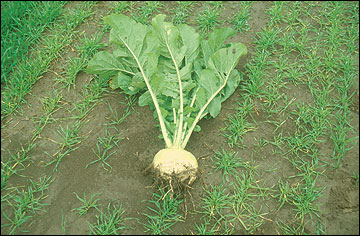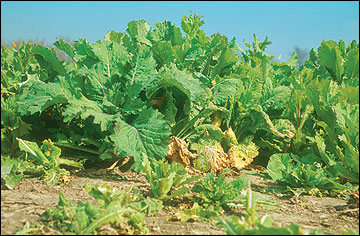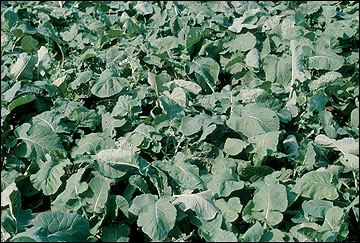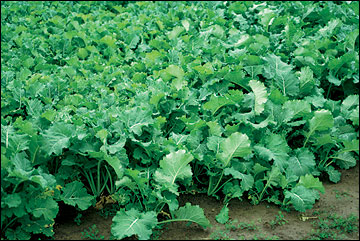Reviewed
Brassica species
Other
Annual lespedeza is primarily used as a pasture legume, although it is sometimes cut for hay. It provides high-quality forage in midsummer when other cool-season grasses and legumes are struggling. It also grows better than other legumes on infertile or shallow soils. Like birdsfoot trefoil, it does not cause bloat. However, it is not problem-free. Its annual yield is lower than that of other legumes, and it does not have as broad a window of forage production. Korean types have proven susceptible to a number of foliar diseases. Annual lespedeza can be valuable in July and August.
 Turnip
Turnip
 Yield distribution of Brassica species in Missouri.
Yield distribution of Brassica species in Missouri.
 Tyfon
Tyfon
 Swede
Swede
 Stemless kale
Stemless kale
- Origin: Mediterranean
- Adaptation to Missouri: Statewide
- Fertilization: Apply 75 lb N/acre at establishment.
- Timing of production: 70 percent of annual production between Oct. 1 and Dec. 1.
- When to begin grazing: Begin grazing to use the forage before early January.
- Lowest cutting or grazing height: 0 inches — little regrowth potential.